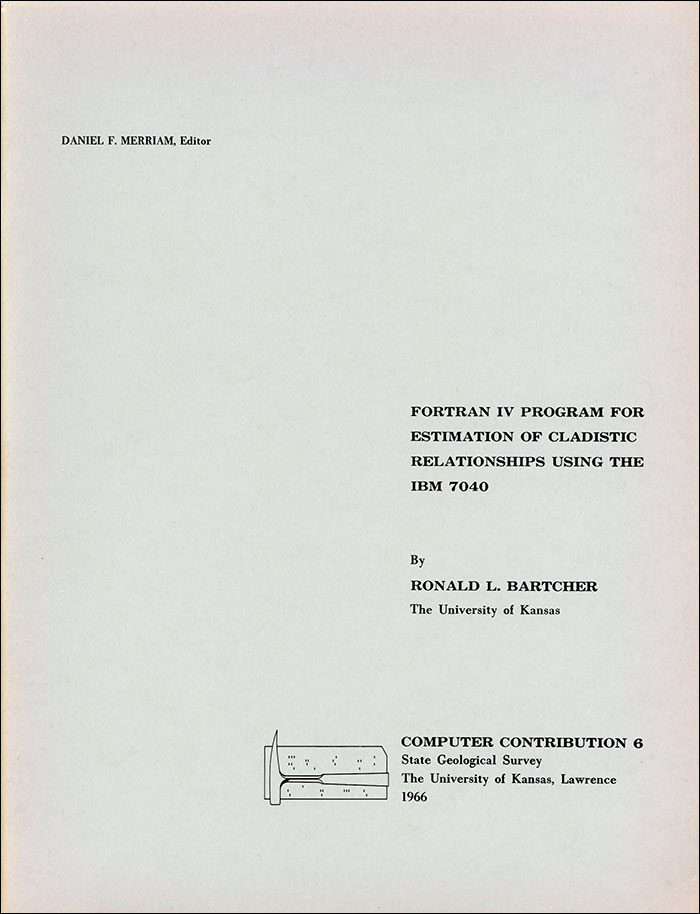
Kansas Geological Survey, Computer Contributions 6, originally published in 1966
University of Kansas

Originally published in 1966 as Kansas Geological Survey Computer Contributions 6.
This series of three programs provides a method for estimating cladistic relationships among taxa as developed by J. H. Camin and R. R. Sokal (1965). By cladistic relationships are meant the evolutionary branching sequence among taxonomic units without regard to phenetic similarities among them or to an absolute time scale. Recent or fossil organisms are presented in a data matrix of the type employed in numerical taxonomy (see Sokal and Sneath, Principals of Numerical Taxonomy, 1963) with the character states arrayed according to a presumed evolutionary sequence. The reconstruction proceeds on the hypothesis that the cladogram which implies the minimum number of evolutionary steps is the best estimate of the correct cladistic relationships. This report is primarily a documentation of the programs and not a description of the theory behind them. Reference should, therefore, be made to the above publication (Camin and Sokal) for the assumptions underlying the method and the justification of the computational steps.
The first program, CLADN1, computes a compatibility matrix from the original data matrix. The compatibility matrix reveals which characters provide "good" patterns that are relatively close to the presumed correct cladogram. It also points out "bad" characters which appear to be miscoded or not to fit the assumptions of the method and should, therefore, be removed from consideration before proceeding with the analysis.
The second program, CLADN2, applies the monothetic clustering procedure to the data matrix to yield a relatively parsimonious cladogram as a basis for further studies. The monothetic procedure is applied to a data matrix from which the "bad" characters have been deleted.
The third program, CLADN3, takes as input the procladogram produced by the monothetic procedure and by performing a number of operations it improves its structure to yield a simpler or more "parsimonious" tree. The following operations are performed: (1) Program removes all empty internodes. (2) Program moves all common steps of branches with a common origin to the base stem of these branches. (3) It moves branches by one or two branching points closer to the base, and tries to rearrange the various branches into clusters that are more parsimonious in terms of the number of evolutionary steps.
Read the PDF version (4.3 MB)
Kansas Geological Survey
Placed on web Aug. 27, 2019; originally published 1966.
Comments to webadmin@kgs.ku.edu
The URL for this page is http://www.kgs.ku.edu/Publications/Bulletins/CC/6/index.html